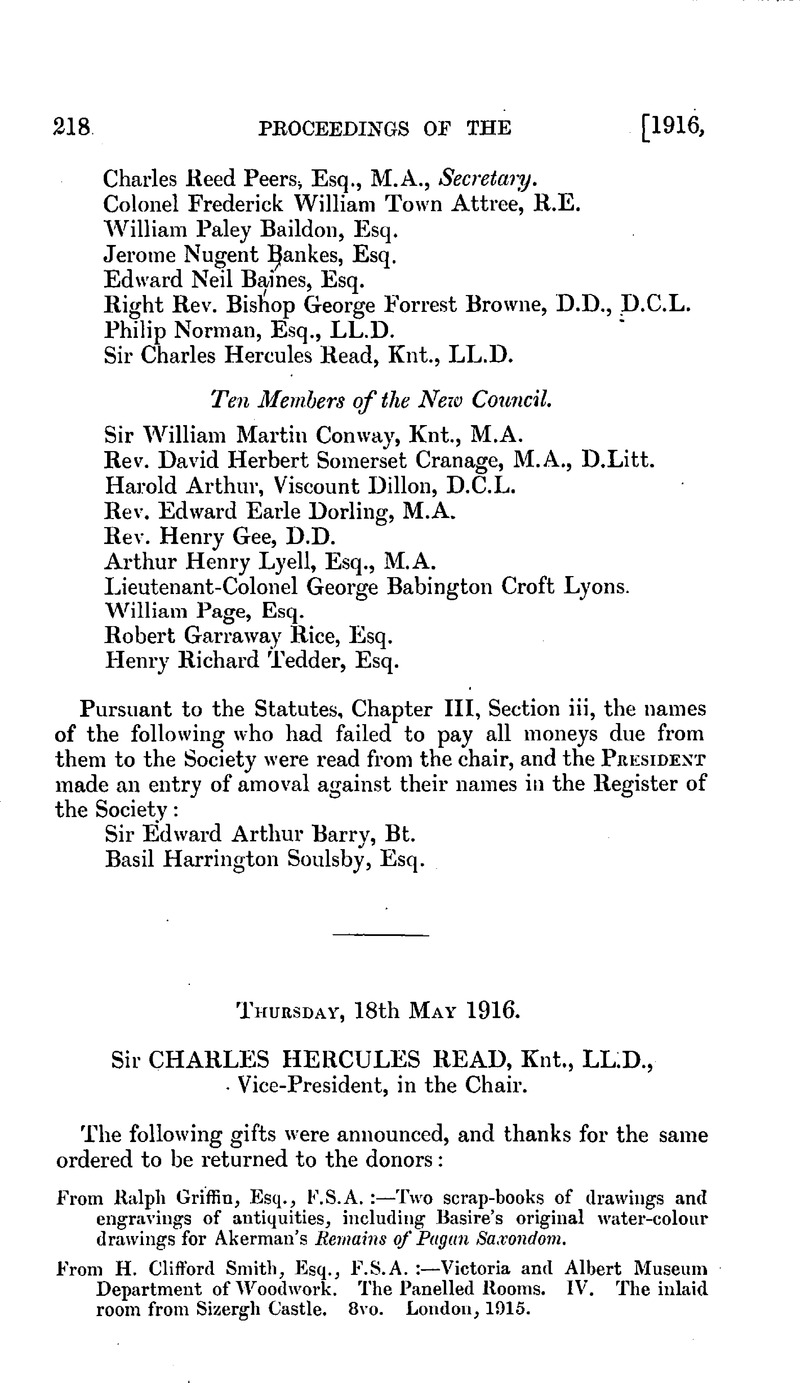No CrossRef data available.
Published online by Cambridge University Press: 10 May 2010

page 220 note 1 The cup and paten are described and the cup illustrated in Cooper's Church Plate of Surrey.
page 220 note 2 A full description has been published by Mr. Johnston in the Proceedings of the London and Middlesex Archaeological Society, N. S. iii, 123.
page 220 note 3 Prosser, G. F., History of St. Giles' Church, Camberwell (1827)Google Scholar.
page 222 note 1 ‘ Urbem, licet hanc natura munierit, muro ipse reddidit fortiorem et angustiorem a cancello ecclesiae ad arcem usque castelli, producta murum construxit longitudine. Locum inter ecclesiam et castellum quern multa occupaverant habitacula, in patentis campi redegit planitiem, ne vel ex sordibus contaminatio, vel ex ignibus ecclesiam attingerent pericula. ’—Sym. Dunelm. Continuatio Prima, Rolls ed., i. 140; Rud and Bedford's ed., 1732, p. 258.
‘ He caused a number of houses to be pulled downe that were neere the church, & might have beene either noisome unto it or dangerous by fire hapning among them. ’—Godwin, Catal. of the Bishops, 1601, p. 511.
page 223 note 1 Laurence of Durham says, ‘ Hac et ab arce potens descendens murus in Austrum, Tenditur, ecclesiae ductus ad usque caput. ’
Dialogi Laurentii, Surt. Soc, vol. lxx; p. 13, lines 444–5.
Neither these words nor those of the continuator of Symeon seem to mean more than that the wall was carried to the east end of the choir, not necessarily to the central apse.
page 223 note 2 There are, however, no indications of this ; the whole of the visible work appears to he modern, probably of the time of the rebuilding of the keep.
page 224 note 1 In both editions of Hutchinson we find it stated that—‘The third gate was called Owengate, where Queen Street now is.’ ‘The fourth gate was called Sidegate, now Dun Cow Lane.’ Hutchinson, 1785 and 1704, vol. ii, p. 283. Sidegate, however, is the long lane leading out to the right from Framwellgate head. Likgate is apparently the same word as Lich-gate or Corpse way, by which people would be brought from the Baileys for interment in the lay-folk's cemetery of the abbey. But Lidgate, from ‘ lidgate ’, a swing-gate (N. E. D.), may have been the original form, and may have become ‘ likgate ’ through association with burials. There is an oft-told story of Philippa, queen of Edward III, that she, being afraid of offending St. Cuthbert by her lodging in the abbey, hurried away through the abbey gates, and passing along the Bailey and Lyegate, soon made her way to the castle. The original authority is Graystanes in Scriptores tres (1333) (Surtees Soc), p. 117 : ‘ Et cum, coena facta, cubasset, intimatum est Regi per monachum quendam, quomodo sanctus Cuthbertus mulierum praesentiam non amabat. Ad praeceptum igitur Regis surrexit Regina ;et in tunica sola, cooperta clamide, per portam quam intravit rediit, et sic ad Castrum (per Likgate) se transtulit; rogans Sanctum, ne quod ignoranter fecerat vindicaret. ’
page 224 note 2 In Documents relating to the establishment of Durham University and of University College therein, 1902, by G. W. Kitchin, D.D., Warden, p. 47, Appendix, 10, ‘ Explanation of the plan of the Castle ’, Note P, referring to the old bede houses, the following occurs, ‘ Built on the Bishop's free-hold, and within the Castle precincts, upon the old wall of the fortress ’.